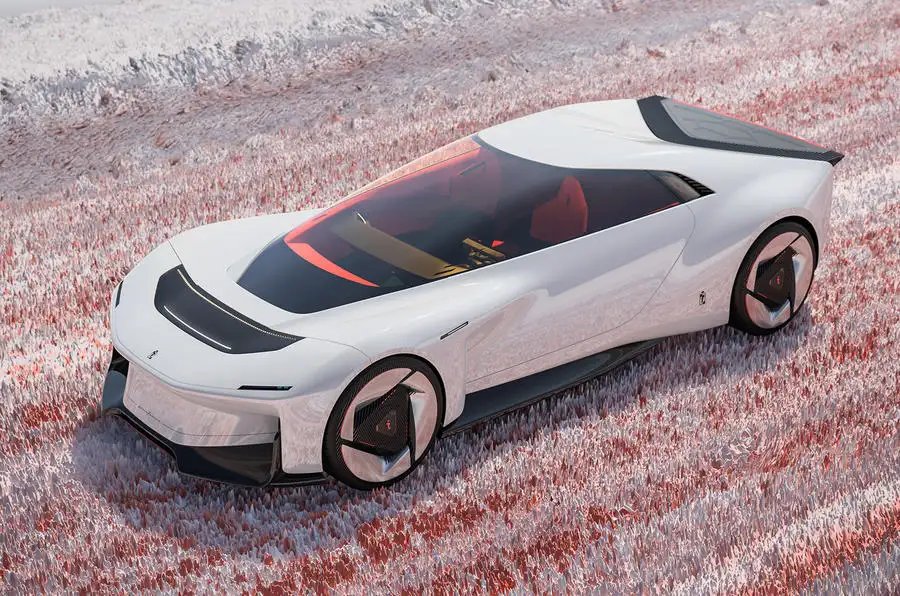New Pininfarina Enigma GT is wild hydrogen-combustion concept

Fabled Italian design house Pininfarina has unveiled a wild design study for a 2+2 grand tourer with a radical powertrain featuring both a hydrogen combustion engine and an electric motor – and has hinted that it wants to develop a real version in the coming years.
The new Enigma GT has been shown at the Geneva motor show. It currently only exists as a ‘virtual’ concept, but the Italian firm says that it is intended to “provide a glimpse” into its “forward-thinking missions” by showcasing future design trends and technology. Pininfarina says that the concept will be further developed ahead of its 95th anniversary next year.
Pininfarina claims that the Enigma GT represents a “journey that will unfold over time”, saying that it has “deliberately withheld” full design details at this stage. Creative chief Felix Kilbertus said the model was “something still a little mysterious, a first step in solving a tricky problem”.
He added that the choice of a grand tourer was because the firm wanted “to offer a fresh perspective on what everyday driving pleasure might mean for a new generation”.
The car is a 2+2 GT with a layout that mimics a mid-rear engine layout. At 4580mm it is relatively short for a GT, while the stretched wheelbase of 2880mm is intended to maximise interior space.
Pininfarina said the all-wheel-drive powertrain has been selected for a combination of “weight containment, driving fun and sustainability”. It features a 436bhp 2.5-litre turbocharged V6 hydrogen-powered internal combustion engine that drives the rear wheels, supplemented by an electric motor on the front axle that adds up to 268bhp.
The combination of a 9kg hydrogen tank and a 10kWh battery gives the Enigma GT a hypothetical range of more than 435 miles.
The powertrain isn’t the only area designed with a focus on weight reduction: the chassis is a carbonfibre monocoque covered with carbon panels. In total, Pininfarina claims the Enigma GT weighs 1690kg.
Meanwhile, the slippery design has a focus on aerodynamics: the styling is dominated by the large ‘canopy’ bubble that encloses the passenger areas. To access it is lifted from the rear hinge, in what Pininfarina says is a nod to past concept cars it developed including the Ferrari 512S Berlinetta Speciale and the Abarth 2000 Coupe Pininfarina.
The Enigma GT also features air-sculpted front wings with active grill shutters, active front wheel deflectors, an active aero-tail and active base bleeding elements that work to minimise drag at all times. Pininfarina claims a drag coefficient of 0.24, claiming that, with the car’s small area, this is at the “cutting edge” of the segment.
As a result, Pininfarina quotes a 0-62mph time of less than four seconds and a limited top speed of 155mph.
The interior also showcases new design trends. Pininfarina says it is intended to offer “a grand touring experience akin to flying”, with an aeronautically inspired dashboard and the use of a host of sustainable materials. Both to save weight and showcase technology, elements of the hydrogen powertrain are visibile from within the car.
The user interface uses an augmented reality windscreen, combined with an unusually shaped multifunction steering wheel with customisable controls. The Enigma GT is also intended to feature advanced driver assistance systems in order to offer a true grand touring experience.
Pininfarina SpA is the Italian design house and coachbuilder that was founded in 1930, and is separate from the Automobili Pininfarina EV supercar firm that was establised by parent firm Mahindra.
Nouvelles connexes


